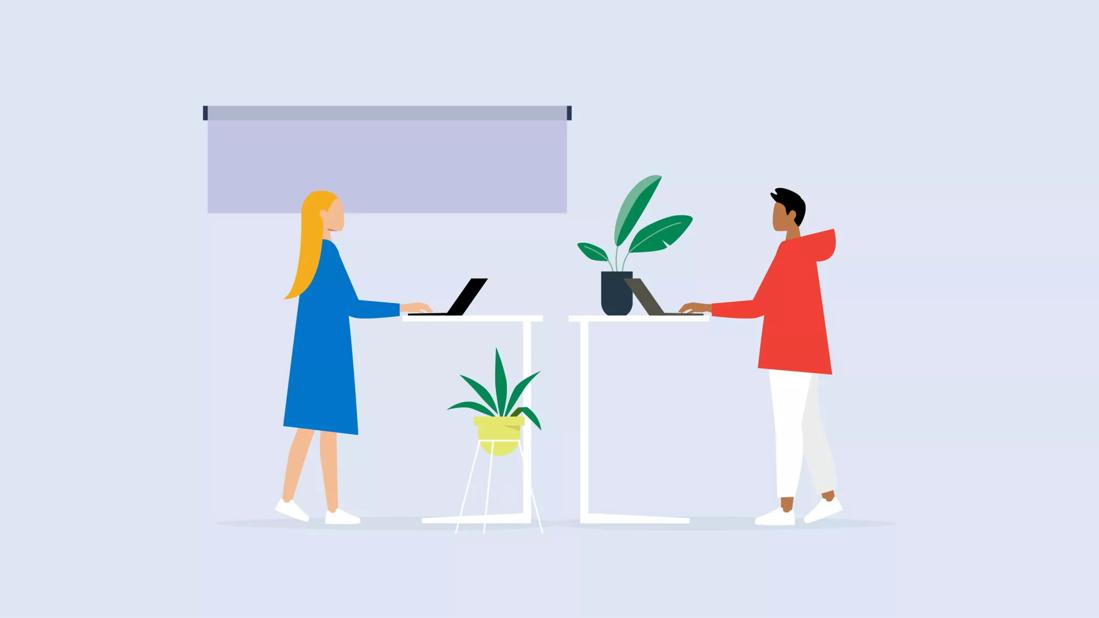Advertisement
Studies show the high health cost of spending hours in a chair

Avoiding cancer may be as simple as getting off your butt and moving around.
Advertisement
Cleveland Clinic is a non-profit academic medical center. Advertising on our site helps support our mission. We do not endorse non-Cleveland Clinic products or services. Policy
Research shows that sitting for long periods of time during the day increases your chance of developing certain types of cancer, including:
The really bad news? Given work and lifestyle trends, odds are you’re sitting in a danger zone. Adults in the United States spend an average of 9.5 hours a day with their derriere planted. Globally, the average is 4.7 hours per day.
So, let’s take a closer look at the link between sedentary behavior and cancer, plus some simple things you can do to better protect your health. Oncologist Dale Shepard, MD, breaks it down.
Can you catch cancer from a couch cushion? Obviously, the answer is no. The relationship between sitting and the disease isn’t that direct.
But there is a connection between inactivity and cancer, as study after study clearly shows. Excess weight is the main thread tying the two together. (Fast fact: It’s estimated that obesity is responsible for 4% to 8% of all cancer diagnoses.)
“Sitting is a correlate of obesity — and having obesity is a risk factor for certain types of cancer,” explains Dr. Shepard. “The real takeaway in all of this is the importance of being active and managing your weight.”
Advertisement
And while the focus here is on cancer risk, it should be noted that sedentary habits also increase your chances of heart disease, Type 2 diabetes and other health issues that can cut your life short.
Now, let’s address a reality of modern times: Spending a good chunk of the day in a chair often isn’t done by choice. It’s a byproduct of a world where many jobs involve a desk and a computer.
Dr. Shepard suggests rethinking how you go about your day in the office to break up your time in a chair. Try to get out of your seat and move around for at least five minutes every hour. Simple ways to meet that goal include:
Adopt the same mindset at home, too. Make sure to hop off the couch or recliner every so often while watching TV so you’re not sitting for long stretches.
“Find simple things you can do to move more,” encourages Dr. Shepard. “Every little bit helps.”
Before we answer, let’s make one thing perfectly clear: Exercise is good for you. It’s recommended that adults get at least 150 minutes of moderate-intensity physical activity per week.
But even if you work out for those 150 minutes or more, it doesn’t erase all the negative effects if you spent eight hours sitting on your bum earlier in the day.
“Periods of inactivity will still put you at risk,” cautions Dr. Shepard. “What you do throughout your entire day affects your health. Working out is good, but it doesn’t just undo what took place earlier.”
So, sprinkle in activity and movement throughout your day in addition to your workout. Consider it part of your training plan.
Will sitting less guarantee you’ll stay cancer-free? Not at all. Many cancers develop from inherited genetic mutations you have no control over. Environmental factors can be a cause. Ditto for your diet or medications.
But moving around improves your odds. “That is why we always tell people how important it is to stay active,” says Dr. Shepard.
Advertisement
Learn more about our editorial process.
Advertisement

Somatic Pilates is less form-focused and more experience-focused

Exercising and stretching your lower back, hamstrings, hips and quads can greatly improve your physical well-being

Perfecting the squat before trying a lunge can start you off on the right foot

Good form is essential for dumbbell rows, which work out your mid- and upper back

Strengthen your gluteus maximus, medius and minimus with bridges, fire hydrants, reverse lunges and more

There’s no need to choose only one because both can elevate your fitness and health

Wall sits can burn fat, strengthen your core, improve posture and even lower blood pressure

Focusing on resistance, cardio and flexibility can help you meet your fitness goals

If you’re feeling short of breath, sleep can be tough — propping yourself up or sleeping on your side may help

If you fear the unknown or find yourself needing reassurance often, you may identify with this attachment style

If you’re looking to boost your gut health, it’s better to get fiber from whole foods